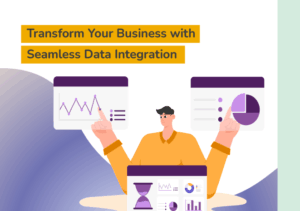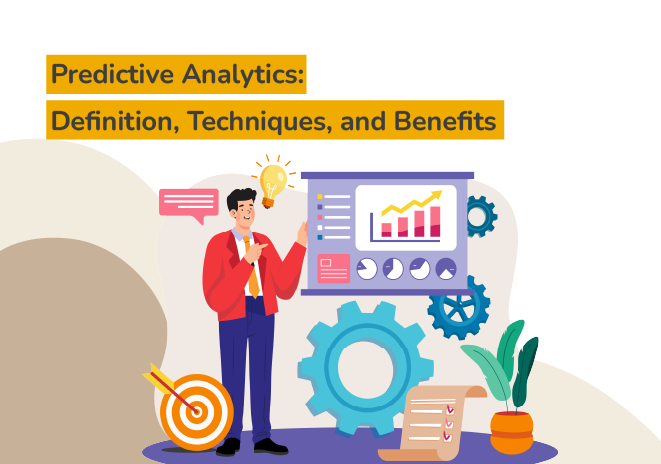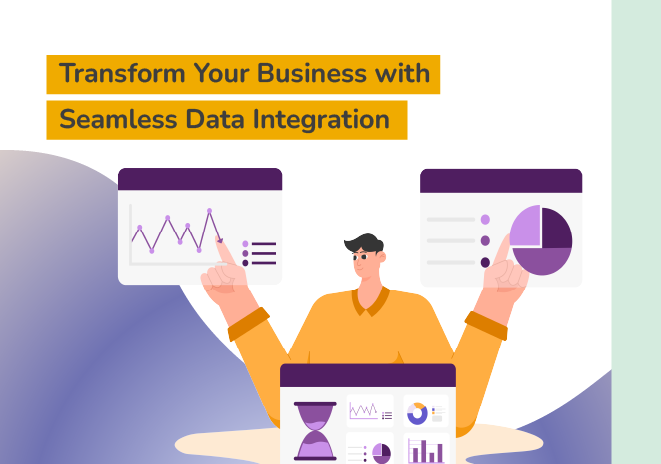What is Data Governance?
Data governance refers to the set of processes, policies, and guidelines that enable organizations to effectively manage their data assets. At its core, data governance ensures data
quality,
security, and
availability throughout its lifecycle. Key principles include establishing
accountability, ensuring
data integrity, and promoting
transparency. Data governance is crucial as it helps organizations reduce risks, improve decision-making, and comply with regulatory requirements. Implementing robust data governance practices allows companies to harness the full potential of their data, leading to strategic advantages and improved operational efficiency.
Key Takeaways
- Data governance ensures data quality, security, and availability throughout its lifecycle.
- Implementing robust data governance practices allows companies to reduce risks and improve decision-making.
- Effective governance aligns data management strategies with business objectives, paving the way for sustainable success.
- Comprehensive data governance enhances accuracy, reliability, and fosters stakeholder trust.
- A dedicated data governance team is crucial for fostering a culture of accountability and aligning data strategies with business goals.
- Key performance indicators help track the effectiveness of data governance strategies, ensuring data alignment with business objectives.
- Continual improvement and adaptation to data governance frameworks ensure they remain relevant to evolving business needs.
- Overcoming data governance challenges involves a strategic approach focused on cross-functional collaboration and advanced tools.
Definition and importance
Data governance is a critical framework that ensures data quality, security, and availability within an organization. It involves defining policies, standards, and practices to effectively manage data across its lifecycle. The importance of data governance lies in its ability to drive decision-making processes, increase data integrity, and maintain compliance with regulations. By fostering accountability and transparency, organizations can mitigate risks associated with data breaches and inaccuracies. Implementing sound data governance structures supports sustainable growth, enabling businesses to harness the full potential of their data assets efficiently and securely.
Key principles of data governance
Data governance is a critical process for managing and securing organizational data, ensuring that it remains accurate, accessible, and usable. Key principles of data governance include establishing robust data security practices, ensuring data quality, and maintaining data privacy. These principles are the foundation for creating consistent and reliable data management processes. By adhering to these principles, organizations can foster trust and enable informed decision-making, enhancing operational efficiency. A well-defined governance framework not only mitigates risks but also aligns data management strategies with business objectives, paving the way for sustainable success.
Why is End-to-End Data Governance Essential?
End-to-end data governance is essential as it addresses the multifaceted challenges in data management. By implementing comprehensive governance, organizations achieve data accuracy, security, and transparency, leading to informed decision-making and regulatory compliance. Without a robust governance framework, businesses risk data breaches, inconsistency, and operational inefficiencies. Furthermore, effective governance fosters trust within the organization and among stakeholders, ensuring all data-related processes align with business goals. Emphasizing a holistic approach to data management mitigates risks and enhances the overall value of data assets, positioning organizations for sustained success in an increasingly data-driven world.
Challenges in data management
Data management presents several
challenges that necessitate
effective end-to-end governance. Organizations often struggle with data
silos,
inconsistency, and ensuring
accuracy across systems. Handling
large volumes of data further complicates the process, leading to potential compliance and
security risks. To combat these challenges, comprehensive data governance frameworks are essential. They enable seamless
integration,
standardization, and
protection of data assets. This promotes
trustworthy data for decision-making, fostering
innovation and
competitive advantage. Properly addressing these issues with a robust governance strategy is critical for organizational success in today’s digitally-driven environment.
Benefits of comprehensive governance
Comprehensive data governance ensures that organizations have a
holistic view of their data lifecycle, leading to enhanced decision-making and operational efficiency. By implementing an
integrated approach, businesses can
mitigate risks associated with data breaches and non-compliance, safeguarding sensitive information. Moreover, end-to-end governance enhances data
accuracy and
reliability, fostering
stakeholder trust. Organizations with comprehensive strategies often experience
improved collaboration across departments, as data is more accessible and consistent. Ultimately, adopting a robust framework can offer
competitive advantages in the marketplace, paving the way for innovation and growth.
How to Implement Effective Data Governance?
Implementing effective
data governance requires a structured approach, beginning with the establishment of a robust framework. This involves defining
data policies that align with organizational objectives, setting up clear
roles and
responsibilities among stakeholders, and crafting a governance
roadmap. Utilizing advanced
tools and
technologies is essential for maintaining data quality and ensuring compliance. Regular
training and stakeholder
engagement foster a culture of data-centric decision-making. Ongoing
monitoring and
evaluation further enhance governance efforts, ensuring data remains a valuable asset. By prioritizing these strategies, organizations can craft a resilient data governance model that drives success.
Key steps to establish a framework
Establishing a robust data governance framework is crucial for ensuring the effective management and utilization of data assets within an organization. Key steps include conducting a comprehensive assessment of current data practices, defining clear goals, and assigning roles and responsibilities. Developing data governance policies and standards is essential, along with integrating suitable tools and technologies to support governance activities. Regular training and communication foster a data-centric culture, while continuous monitoring and optimization of the framework ensure long-term success.
Tools and technologies to utilize
In today’s rapidly evolving digital landscape, utilizing the right
tools and technologies is pivotal for
effective data governance. These technologies help organizations manage, protect, and leverage data more efficiently. Solutions like
data catalogs,
metadata management systems, and
automated compliance tools provide essential capabilities for classifying and securing data, ensuring regulatory compliance, and enhancing data quality. Additionally,
business intelligence platforms integrate seamlessly with existing systems, offering insights that drive better decision-making. By leveraging these technologies, organizations can streamline processes, reduce errors, and ultimately achieve greater transparency and control over their data assets.
What Roles are Crucial in Data Governance?
Effective data governance is propelled by a well-defined structure of roles and responsibilities. Essential roles include data stewards, who ensure data quality and compliance, and data owners, accountable for data accuracy and accessibility. The data governance team orchestrates the policies and processes, fostering an organizational culture that values data integrity. Each role is crucial as they collectively uphold governance standards and promote data-driven decision-making. Roles must be clearly defined to prevent overlaps and ensure seamless collaboration. A cohesive team with clear objectives and responsibilities is imperative for a successful data governance strategy.
Roles and responsibilities
In the realm of data governance, defining clear roles and responsibilities is pivotal for successful implementation. This framework not only delineates accountability but also ensures a seamless workflow across departments. Key positions such as Data Stewards, Data Custodians, and Data Owners are integral in maintaining data quality and security. These roles focus on overseeing data management strategies and enforcing data policies. By establishing a dedicated data governance team, organizations can foster a culture of accountability and collaboration, ensuring every member understands their contribution to data excellence.
Importance of a data governance team
A
data governance team is crucial for building a robust framework ensuring effective data management across an organization. This team is responsible for implementing policies, maintaining data quality, and ensuring compliance. Comprised of diverse roles, such as data stewards and data custodians, the team ensures
collaborative efforts in aligning data strategy with business goals. Their expertise not only enhances data
integrity and security, but also fosters
innovation and efficiency. The team’s proactive approach to oversee data practices plays a pivotal role in driving organizational success, emphasizing why a dedicated governance team is indispensable.
How to Measure Success in Data Governance?
Measuring success in data governance involves identifying key performance indicators (KPIs) that reflect the effectiveness of governance strategies. These KPIs could include data quality improvement, reduction in data-related incidents, and increased data utilization for decision-making. Equally important are methods to evaluate these indicators, such as regular audits and stakeholder feedback. By setting clear objectives and consistently reviewing them, organizations can ensure that their governance frameworks evolve to meet business needs, providing a robust mechanism to drive data-driven success across departments.
| Key Performance Indicators |
Methods to Evaluate |
| Data Quality Improvement |
Regular Audits |
| Reduction in Data Incidents |
Stakeholder Feedback |
| Increased Data Utilization |
Consistent Review Meetings |
Key performance indicators
Monitoring key performance indicators (KPIs) in data governance is vital to ensure successful management and utilization of data assets. These KPIs help organizations track progress, identify areas needing improvement, and measure the effectiveness of governance initiatives. Essential indicators include data quality metrics, compliance rates, data-related incident frequency, and user satisfaction scores. By regularly assessing these metrics, organizations can optimize their data governance strategies, ensuring data reliability and regulatory compliance. This proactive approach aids in aligning data strategies with business goals, enhancing decision-making, and fostering overall organizational success.
„Key performance indicators in data governance ensure data reliability and alignment with business goals.“
Methods to evaluate effectiveness
Evaluating the effectiveness of data governance involves analyzing specific key performance indicators (KPIs) that highlight the impact and success of governance strategies. Organizations should focus on metrics such as data quality improvements, compliance adherence rates, and data breach reduction. Regular audits and benchmarking against industry standards serve as essential tools in this process. Engaging with stakeholders ensures a comprehensive assessment, unveiling areas for continuous improvement. Besides quantifiable measures, qualitative feedback from staff and management provides insightful perspectives on the governance framework’s practical utility and alignment with business goals. Successful evaluation guarantees that governance strategies effectively meet organizational needs.
- Data quality improvements
- Compliance adherence rates
- Data breach reduction
- Regular audits and benchmarking
- Stakeholder engagement
What are the Best Practices for Data Governance?
Mastering
data governance is crucial for ensuring an organization’s success in managing its data assets. Implementing best practices involves strategies like establishing solid
policies and
procedures to ensure compliance and protect sensitive information. Continuous
improvement and
adaptation to emerging data trends and technologies are vital to staying ahead. Organizations should invest in
training and fostering a culture that prioritizes data integrity. Regular audits and leveraging user feedback can uncover potential gaps. By maintaining transparent communication and clear roles within the data governance team, enterprises can handle data more effectively and sustainably, ultimately leading to more insightful and data-driven decision-making.
Strategies to ensure compliance
To effectively ensure
compliance in data governance, organizations must adopt a proactive approach that integrates
best practices at every level. This involves setting up a clear and comprehensive framework that outlines
data policies and procedures. Regular
audits and
reviews are essential to monitor adherence and make necessary adjustments. Leveraging
automated tools can streamline compliance monitoring, thereby reducing manual errors. Equally important is fostering a
culture of accountability, where all stakeholders are aware of their roles in maintaining data governance standards. By embedding these strategies, organizations can effectively mitigate risks associated with data breaches and regulatory penalties.
Continuous improvement and adaptation
Continuous improvement and adaptation are
essential components of successful data governance. They
ensure that your framework remains
relevant in the face of evolving business needs. Organizations must actively seek feedback and implement changes to
align with both regulatory demands and stakeholder expectations. Leveraging
data insights for ongoing enhancement facilitates more
agile decision-making processes. Embracing a culture of continuous evaluation allows organizations to proactively
address challenges, optimize
data processes, and maintain
compliance. This approach not only builds trust but also strengthens the organization’s
resilience against potential data-related risks.
How Can Organizations Overcome Data Governance Challenges?
Overcoming
data governance challenges requires a strategic approach that addresses common obstacles like data silos, compliance issues, and lack of alignment across departments. Organizations must implement a robust framework for
end-to-end governance, prioritizing cross-functional collaboration. Real-world examples highlight how companies have successfully navigated these hurdles by adopting advanced tools and flexible policies that enable adaptability. By fostering a culture centered on data-driven decision-making, businesses can streamline processes and enhance accountability. This unified approach not only mitigates risks but also optimizes data utilization, leading to sustained success. Effective
data governance ultimately ensures the integrity, security, and quality of data across the organization.
Common obstacles and solutions
Navigating the landscape of data governance often presents a myriad of obstacles. Common challenges include data silos, lack of clarity in roles, and inadequate technology integration, all of which impede seamless data flow. Solutions start with fostering a culture of transparency, where clear communication outlines responsibilities. Implementing integrated technology platforms can break down silos, ensuring consistent data accessibility across departments. Emphasizing training and development can empower teams to fully grasp governance protocols, driving organizational success. Leveraging these strategies supports a resilient data environment, adaptable to evolving business needs.
Real-world examples of successful governance
To grasp the
significance of end-to-end
data governance, examining real-world examples is
crucial. One notable case is a global retailer that implemented a robust data governance framework, resulting in improved decision-making and enhanced data
quality across the organization. Another success story involves a healthcare institution that faced compliance challenges and optimized its data governance processes, ensuring patient data privacy while boosting operational
efficiency. These examples highlight that effective governance not only solves immediate challenges but also fosters long-term
growth and competitive advantage, underlining its
relevance for any data-driven organization.
FAQ
What is data governance?
Data governance refers to the set of processes, policies, and guidelines that enable organizations to effectively manage their data assets, ensuring data quality, security, and availability throughout its lifecycle.
Why is data governance important?
Data governance is important as it helps organizations reduce risks, improve decision-making, and comply with regulatory requirements, allowing them to harness the full potential of their data.
What are the key principles of data governance?
Key principles include establishing accountability, ensuring data integrity, maintaining data privacy, promoting transparency, and fostering trust.
What challenges are associated with data management?
Challenges include dealing with data silos, inconsistency, accuracy, and handling large volumes of data which can pose compliance and security risks.
How can organizations measure success in data governance?
Success can be measured through key performance indicators like data quality improvement, reduction in data-related incidents, and increased data utilization, assessed via audits and stakeholder feedback.
What roles are crucial in data governance?
Crucial roles include data stewards, data owners, and the data governance team, all responsible for ensuring data quality, compliance, and orchestrating governance policies.
How can organizations overcome data governance challenges?
Organizations can overcome challenges by implementing a robust framework for end-to-end governance, fostering cross-functional collaboration, and leveraging advanced tools and flexible policies.









